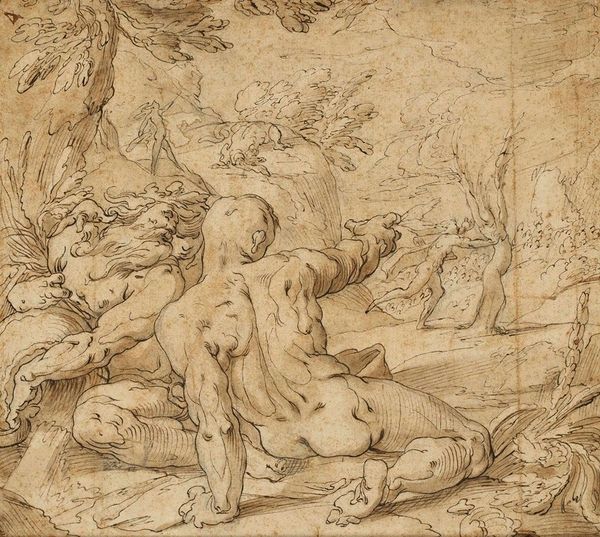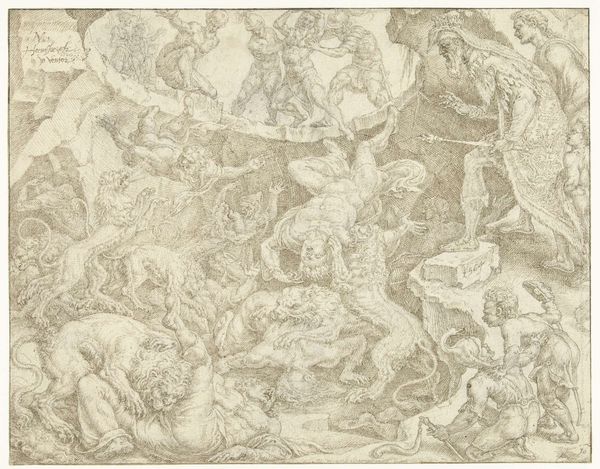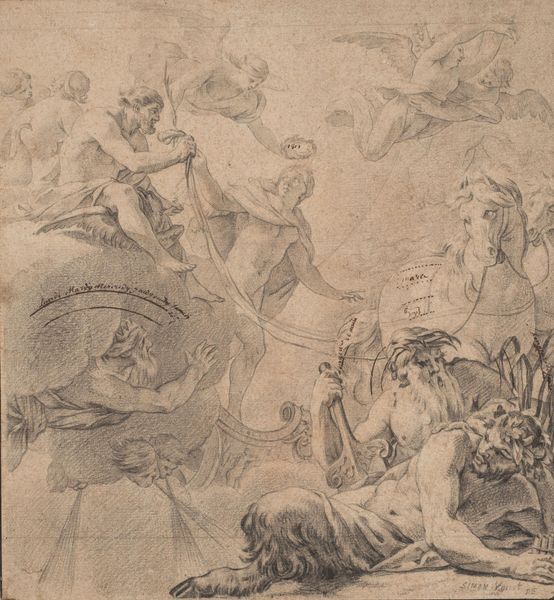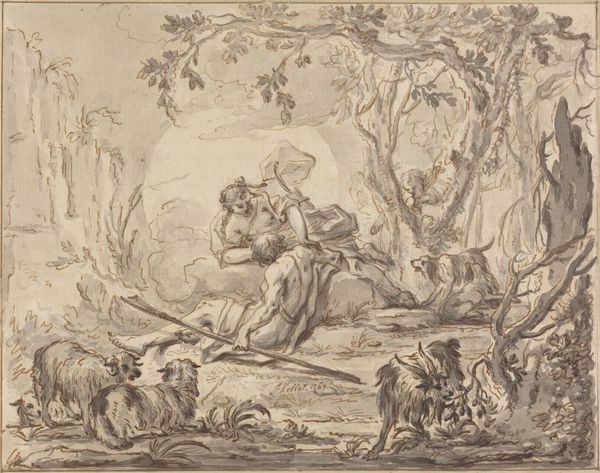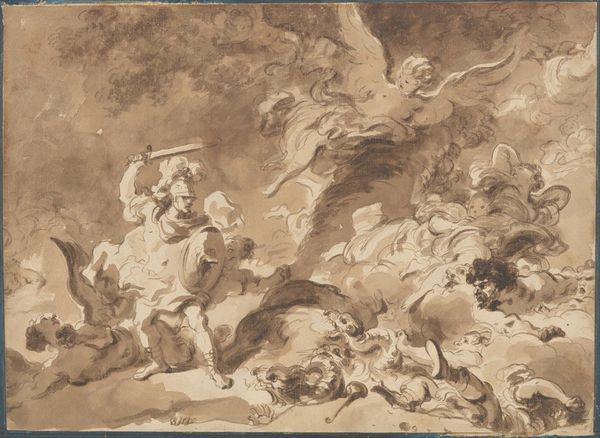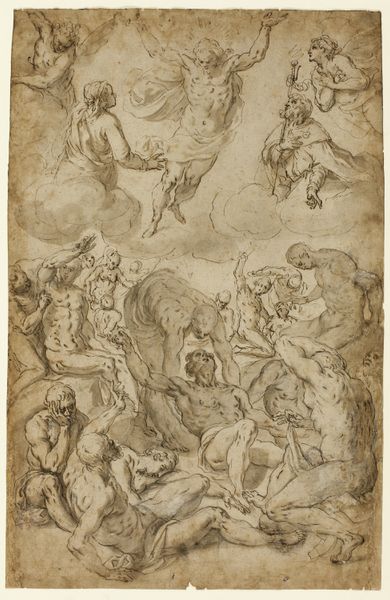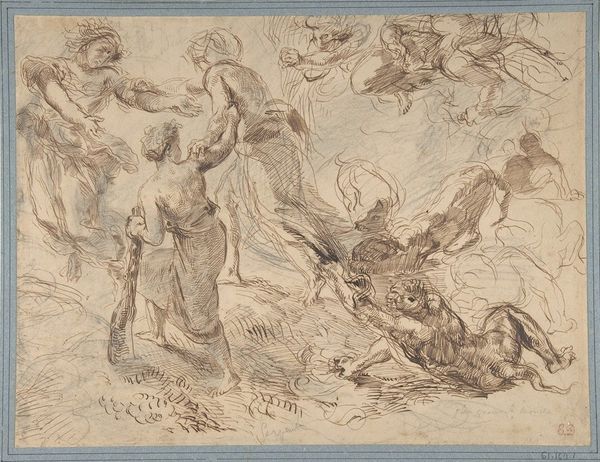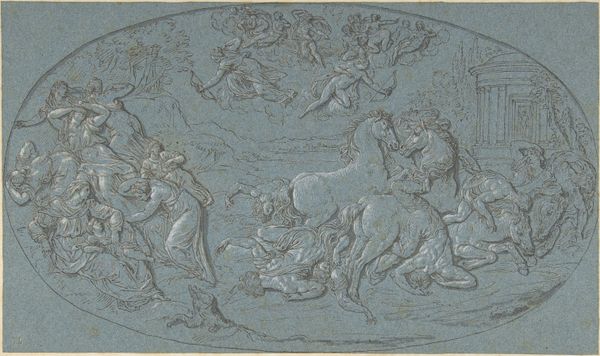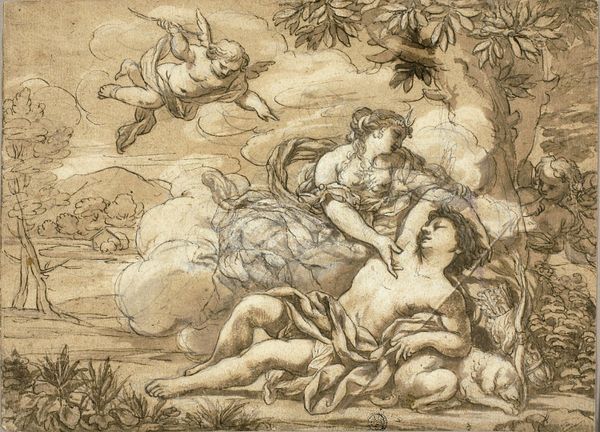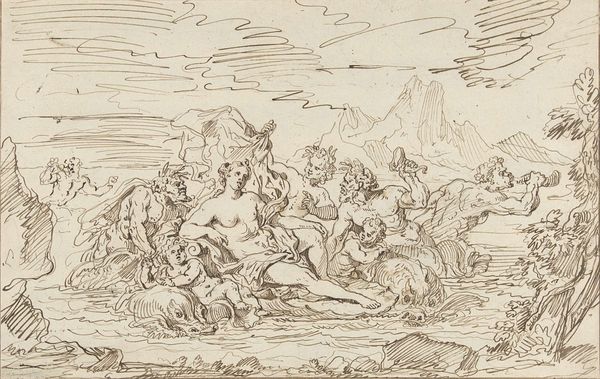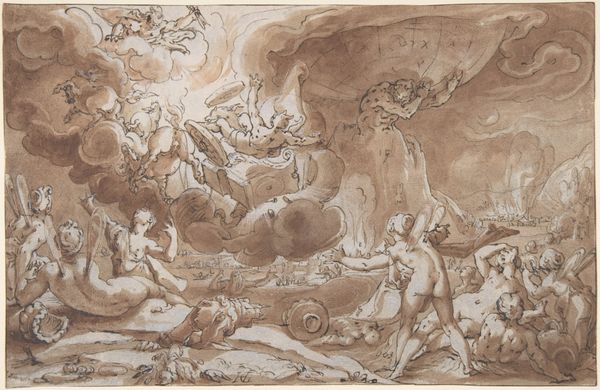
drawing, ink
#
drawing
#
allegory
#
ink painting
#
figuration
#
11_renaissance
#
ink
#
history-painting
#
nude
Copyright: Public Domain: Artvee
Editor: This is "The Judgment of Paris," a 16th-century ink drawing by Abraham Bloemaert. I find the sheer number of figures and the density of the linework kind of overwhelming, almost dreamlike. How do you interpret this work? Curator: The density you perceive contributes to a symbolic weight. "The Judgment of Paris" is more than just a mythological scene; it's a crucible of beauty, desire, and fateful choice. Look at Paris, set apart by his Phrygian cap and the act of awarding the golden apple. What does that apple represent, and to whom is he compelled to give it? Editor: So, the apple represents...beauty? And he has to choose which goddess is the fairest? Curator: Precisely! But consider this: beauty, in this context, isn't merely aesthetic. Aphrodite promised him Helen, the most beautiful woman in the world, if he chose her. Power, wisdom, love – these were the stakes. This scene, frozen in ink, ripples with consequence. Does the act carry echoes beyond mythology into societal beauty standards today? Editor: It's definitely a high-pressure situation! It’s interesting to think about the cultural implications, how choosing beauty as Aphrodite presents it ultimately leads to the Trojan War. Curator: Yes! This narrative freezes a moment where personal desire becomes intertwined with monumental consequences. By fixating on the drama, do we, in turn, reveal more about ourselves? Editor: Definitely, I learned to consider these narratives aren’t just pretty pictures. There is also more than meets the eye if you want to go digging. Thanks. Curator: The pleasure was all mine, until next time!
Comments
No comments
Be the first to comment and join the conversation on the ultimate creative platform.
